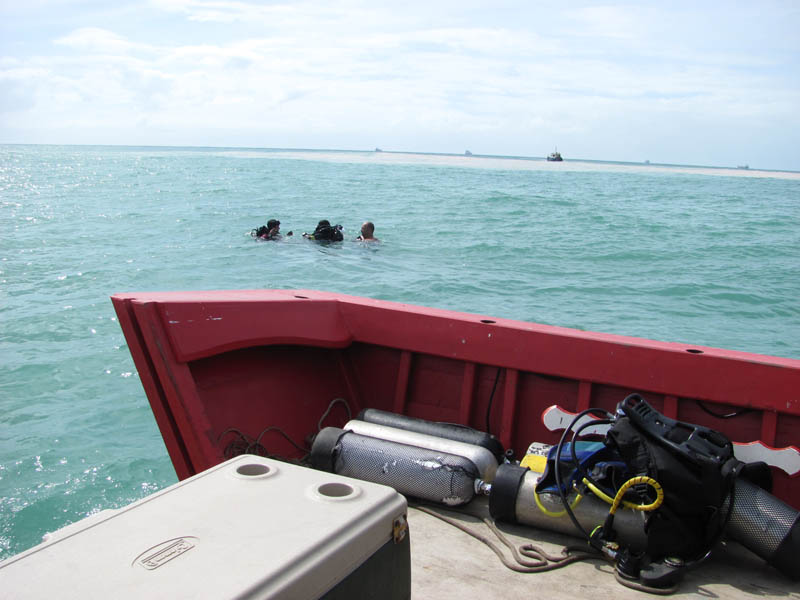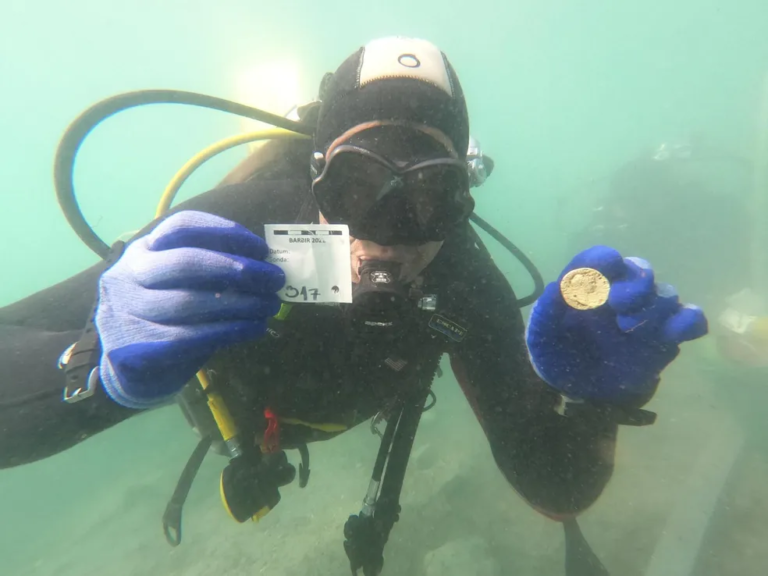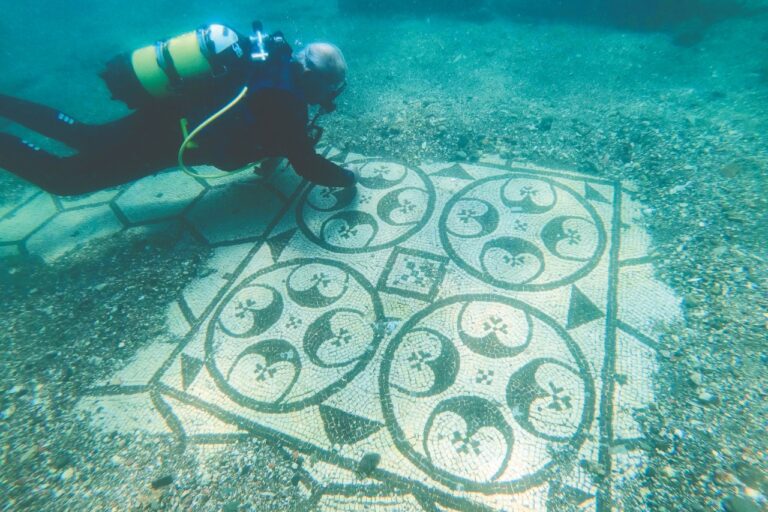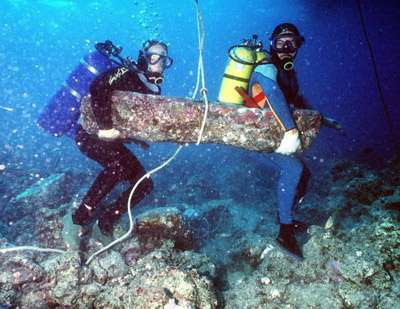Recreational Diving and Archaeology: Top Underwater Destinations
Recreational diving has become increasingly popular among adventure seekers and history enthusiasts. It offers a unique and thrilling experience of exploring underwater archaeological sites, creating a perfect blend of adventure and history.
Diving allows individuals to embark on an educational and cultural journey while exploring archaeological sites beneath the sea. This underwater exploration not only provides a deeper understanding of history but also contributes to the preservation and protection of these ancient sites.
Combining diving with the exploration of archaeological sites brings a whole new dimension to the diving experience. Imagine swimming among ancient ruins and discovering remnants of civilizations long gone. It is an extraordinary opportunity to witness history firsthand and connect with the past in a way that cannot be replicated on dry land.
The demand for such experiences has been growing, as more and more people are discovering the allure of combining recreational diving with archaeological exploration. This has led to the development of accessible diving destinations that cater specifically to those seeking these unique underwater experiences.
In the following sections, we will explore some of the top destinations around the world for recreational diving and archaeology, highlighting the cultural significance and historical treasures they hold. Join us on this journey as we dive into the depths of history and uncover the secrets hidden beneath the waves.
Table of Contents
Benefits of Recreational Diving and Archaeology
Exploring archaeological sites underwater while engaging in recreational diving offers a plethora of benefits both educationally and culturally. By delving into the depths of the ocean, divers have the chance to witness history firsthand and connect with ancient civilizations that once thrived. This unique experience not only provides a deeper understanding of the past but also sparks a sense of wonder and fascination that is hard to replicate.
In addition to the intellectual benefits, recreational diving offers numerous physical and mental health benefits. Diving requires a certain level of focus, control, and physical exertion, making it an excellent form of exercise. The calmness and tranquility of the underwater world also provide a sense of relaxation and serenity, allowing divers to escape from the stresses of everyday life.
Moreover, the combination of recreational diving and underwater archaeology adds an extra layer of intrigue to the diving experience. The anticipation and excitement of discovering sunken treasures and relics from the past add an element of adventure to each dive. The opportunity to uncover forgotten stories and unravel mysteries not only quenches the thirst for exploration but also fosters a sense of awe and appreciation for the wonders of history.
As interest in underwater archaeology continues to grow, there is a rising demand for more accessible diving destinations. Divers are eager to explore new and uncharted archaeological sites, creating a need for responsible diving practices that preserve these ancient sites for future generations. By promoting sustainable tourism and encouraging exploration in a responsible and respectful manner, we can ensure that these underwater treasures remain intact and continue to captivate adventurers and history enthusiasts alike.
In conclusion, the benefits of combining recreational diving with archaeology are undeniable. From the educational and cultural significance to the physical and mental health benefits, diving into the depths to explore archaeological sites offers a unique and fulfilling experience. As interest in underwater archaeology continues to surge, it is crucial that we embrace responsible diving practices to preserve these underwater wonders for future generations to enjoy. So why wait? Dive in and embark on a journey to these top underwater destinations, where history and adventure await.
Top Underwater Destinations for Recreational Diving and Archaeology
When it comes to combining the thrill of recreational diving with the fascination of exploring underwater archaeological sites, there are some top destinations that should not be missed. These locations offer not only the beauty of the underwater world but also the opportunity to uncover the mysteries of ancient civilizations. Let’s dive in and discover these captivating places.
The Yucatán Peninsula, Mexico
The Yucatán Peninsula in Mexico is a fascinating destination for both recreational divers and archaeology enthusiasts. With its rich Mayan culture and abundant archaeological sites, this region offers a unique and captivating experience. The stunning coastal city of Tulum, known for its well-preserved Mayan ruins overlooking the Caribbean Sea, is a must-visit for history lovers. Diving in Tulum allows you to explore the ancient structures that were once part of this thriving Maya civilization.
But Tulum is just the tip of the iceberg when it comes to archaeological underwater exploration in the Yucatán Peninsula. One of the most remarkable experiences you can have is diving in the cenotes that are scattered throughout the region. These natural sinkholes, which were considered sacred by the Mayans, offer a surreal and otherworldly diving experience. World-renowned cenotes like Cenote Angelita provide divers with the opportunity to navigate through underwater cave systems and witness mesmerizing limestone formations.
The Yucatán Peninsula’s underwater world is not only a playground for divers but also a window into the past. The subaquatic archaeological sites in this region provide valuable insights into the ancient Mayan civilization. By diving among the remnants of this remarkable culture, you can gain a deeper understanding of their customs, rituals, and way of life. The experience is not just visually stunning but also intellectually enriching.
To protect and preserve these archaeological sites, it is essential to practice responsible diving. Divers should take care not to disturb or damage any artifacts they may come across. By maintaining respectful behavior and following proper guidelines, we can ensure that these sites are preserved for future generations to explore and learn from.
So, if you’re looking for a truly unique diving experience that combines adventure, history, and culture, the Yucatán Peninsula in Mexico is the perfect destination. Dive into the depths of the cenotes and embrace the opportunity to immerse yourself in the fascinating underwater world of the Mayan civilization. It’s an experience that will not only leave you in awe but also inspire a deeper appreciation for the wonders of our world’s history.
Alexandria, Egypt
Alexandria, Egypt holds immense historical importance and offers a unique opportunity for recreational diving and archaeological exploration. The city is known for its fascinating underwater ruins, which include notable sites like Cleopatra’s Palace, the Lighthouse of Alexandria, and submerged ancient buildings.
Divers can immerse themselves in the rich history of Alexandria, discovering the remnants of a bygone era beneath the waves. The underwater ruins of Cleopatra’s Palace, once a magnificent testament to the glory of ancient Egypt, provide a glimpse into the opulence and grandeur of the Ptolemaic dynasty. Exploring the ruins allows divers to envision the lavish lifestyle of Cleopatra and unravel the secrets of her abode.
The Lighthouse of Alexandria, one of the Seven Wonders of the Ancient World, stood tall as a beacon of knowledge and enlightenment. While the lighthouse has long been lost to the depths of the Mediterranean, its submerged remains captivate the imagination of divers. Swimming amidst these ancient ruins, one can almost feel the weight of history and appreciate the significance of this magnificent structure.
In addition to Cleopatra’s Palace and the Lighthouse, Alexandria offers a multitude of other diving sites and shipwrecks that enthrall divers, such as the famous SS Thistlegorm. This British cargo ship, sunk during World War II, holds a trove of historical artifacts and provides divers with a unique window into the past. Exploring the shipwreck allows divers to witness the remnants of wartime supply missions and experience the haunting blend of history and oceanic beauty.
Diving in Alexandria not only allows adventurers to witness underwater ruins and shipwrecks firsthand but also offers a chance to immerse oneself in the captivating history of a region that shaped the world. Through recreational diving and archaeological exploration, divers can forge a deep connection with the past, gaining a profound understanding of the civilizations that once thrived in Alexandria’s vibrant waters.
Easter Island, Chile
Easter Island, located in the southeastern Pacific Ocean, is famous for its enigmatic Moai statues. These impressive stone monoliths, carved by the ancient civilization that once inhabited the island, are not only present on land but also submerged under the surrounding water. The presence of these submerged Moai statues adds an extra layer of fascination and mystery to the already intriguing island.
Underwater archaeological research plays a crucial role in uncovering the history and origins of the Moai statues. Through careful exploration and analysis, archaeologists are able to gain valuable insights into the techniques used for carving and transporting these massive stone figures. They are also able to determine the purpose and significance of the statues within the society that created them.
The significance of underwater archaeological research at Easter Island extends beyond the statues themselves. It provides a deeper understanding of the ancient civilization that once thrived on the island and offers a glimpse into their daily lives, beliefs, and practices. Through the study of underwater archaeological sites, experts are able to piece together the puzzle of Easter Island’s past and shed light on its unique cultural heritage.
Exploring the submerged Moai statues is an extraordinary experience for recreational divers and history enthusiasts alike. Diving in the crystal-clear waters surrounding Easter Island allows visitors to not only witness the Moai statues in their natural underwater habitat but also immerse themselves in the island’s rich cultural history. The underwater landscapes and marine life that accompany these archaeological sites add an element of awe and wonder to the diving experience.
In conclusion, Easter Island offers a truly unique opportunity for recreational diving and archaeological exploration. The mysterious and fascinating Moai statues, both on land and underwater, captivate the imagination and spark a desire for knowledge and discovery. Through underwater archaeological research, the history and origins of the Moai statues are gradually unveiled, providing invaluable insights into the ancient civilization that once thrived on Easter Island. For those seeking a diving experience rich in history, culture, and natural beauty, Easter Island is a must-visit destination. But it is important to remember the responsibility we have to preserve these ancient sites for future generations by practicing responsible diving.
Baiae, Italy
Baiae, located in Italy, is home to fascinating submerged ruins of the ancient Roman city. In its prime, Baiae was a renowned and sought-after resort for the Roman Empire’s elite. Today, recreational divers have the opportunity to explore the various structures that lie beneath the water’s surface.
Temples, baths, and villas are among the remarkable archaeological wonders waiting to be discovered while diving in Baiae. These structures provide a glimpse into the opulence and grandeur that once characterized this ancient Roman city. Imagine swimming alongside the remains of ancient temples and witnessing the remnants of luxurious Roman villas beneath the crystal-clear waters.
Diving in Baiae allows adventurers to immerse themselves in the rich history of the Roman Empire. It is an unparalleled experience to witness the remnants of Roman life and architecture that have been preserved for centuries underwater. The submerged ruins offer a unique perspective on the culture and lifestyle of ancient Romans, making Baiae a must-visit destination for diving enthusiasts and history buffs alike.
Moreover, the combination of recreational diving and archaeological exploration in Baiae provides not only an exciting adventure but also a valuable educational experience. By diving into the depths of Baiae, divers can gain a deeper understanding of Roman history and appreciate the significance of this once-thriving city.
While indulging in the thrill of recreational diving, it is essential to practice responsible diving techniques to preserve these ancient sites for future generations. Respect for the environment and careful exploration are crucial to ensure the longevity of Baiae’s underwater treasures. By being conscientious divers, we can protect and promote the preservation of these historical sites and continue to enjoy the rich history and culture they offer.
In conclusion, Baiae offers a truly unique and captivating destination for recreational diving and archaeological exploration. By delving into the submerged ruins of this ancient Roman city, divers can immerse themselves in the history and grandeur of the Roman Empire. The temples, baths, and villas that can be explored in Baiae provide a remarkable glimpse into the past and showcase the ingenuity and sophistication of ancient Roman civilization. We encourage all adventure seekers and history enthusiasts to explore Baiae, ensuring responsible diving practices to safeguard and cherish these invaluable archaeological sites for generations to come.
Conclusion
In conclusion, the combination of recreational diving and archaeological exploration offers numerous advantages. Not only does it provide a unique and thrilling experience for adventure seekers and history enthusiasts, but it also holds educational and cultural significance. By diving into archaeological sites, divers can delve into the mysteries of the past and gain a deeper understanding of ancient civilizations.
Exploring archaeological sites while diving provides an immersive experience that cannot be replicated elsewhere. It allows divers to witness firsthand the remnants of ancient civilizations and to learn about their customs, traditions, and way of life. This educational aspect of recreational diving and archaeology is invaluable, as it promotes an appreciation for history and culture.
Furthermore, combining diving with archaeological exploration also offers several physical and mental health benefits. Diving requires physical fitness and stamina, which promotes overall well-being. Additionally, diving in underwater archaeological sites adds an element of intrigue and excitement to the experience, keeping divers mentally engaged and stimulated.
There is a growing interest in underwater archaeology, and as a result, the demand for accessible diving destinations is increasing. Fortunately, there are several top underwater destinations that cater to both recreational divers and archaeology enthusiasts.
The Yucatán Peninsula in Mexico offers a wealth of Mayan culture and numerous archaeological sites, such as Tulum and Cenote Angelita. Diving in cenotes, natural sinkholes sacred to the Mayans, provides a unique and awe-inspiring experience.
Alexandria in Egypt is another top destination for recreational diving and archaeology. The city boasts historical importance and a plethora of underwater ruins, including Cleopatra’s Palace and the legendary Lighthouse of Alexandria. Divers can explore various diving sites and shipwrecks, such as the SS Thistlegorm.
Easter Island in Chile is famous for its mysterious Moai statues. While these statues are primarily found on land, there are also submerged versions under the surrounding waters. Underwater archaeological research aims to uncover the history and origins of these enigmatic statues.
The submerged ruins of the ancient Roman city of Baiae in Italy provide a captivating diving experience. This city, once a popular resort for the elite during the Roman Empire, offers divers the opportunity to explore various structures, including temples, baths, and villas.
In conclusion, the combination of recreational diving and archaeological exploration presents a unique and enriching experience. It allows divers to not only explore underwater treasures but also to gain insight into the ancient civilizations that once thrived in these locations. However, it is crucial to emphasize the need for responsible diving to preserve these ancient sites for future generations. By respecting the underwater environment and following guidelines, divers can help ensure the protection and conservation of these archaeological wonders. So, get ready to embark on an unforgettable journey to these top underwater destinations and discover a world rich with history, culture, and natural beauty.







